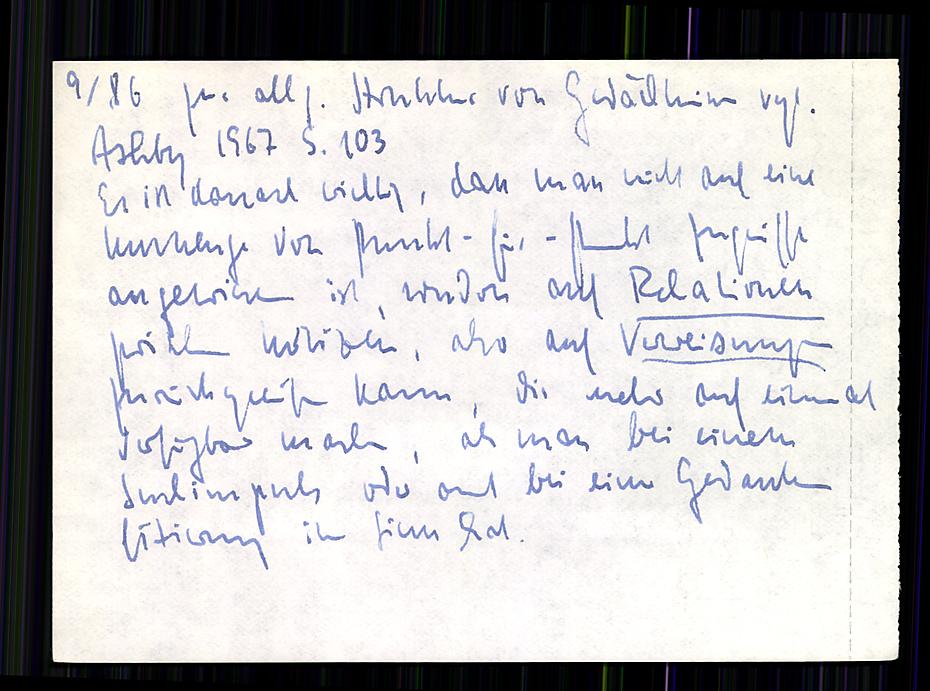ZK II note 9/8b 9/8b On the general structure of memories, see Ashby 1967, p. 103 . It is then important that you do not have to rely on a huge number of point-by-point accesses , but rather that you can rely on relationships between notes, i.e. references , that make more available at once than you would with a search impulse or with one thought - has fixation in mind.
This underlies the ideas of songlines and oral mnemonic practices and is related to Vannevar Bush's "associative trails" in As We May Think.
Luhmann, Niklas. “ZK II Zettel 9/8b.” Niklas Luhmann-Archiv, undated. https://niklas-luhmann-archiv.de/bestand/zettelkasten/zettel/ZK_2_NB_9-8b_V.
